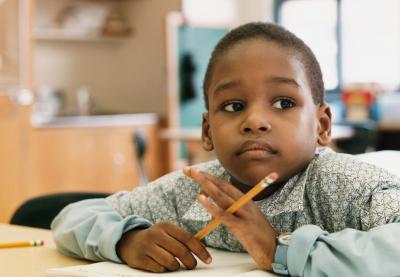Self-awareness is one of the most important skills we can teach our students. There is, obviously, no cookie-cutter method for cultivating this skill, especially within the confines of a classroom full of 6- and 7-year-olds. But just because self-awareness can be a challenge to teach, that doesn't mean we should let it slip through the cracks.
We differentiate our lesson plans to accommodate the academic needs of every learner. Why can’t we do the same when teaching social emotional skills?
Like most kids, each of my students has their own set of triggers, events or emotions they bring with them or encounter in my classroom that will—without them noticing—nudge them closer and closer to a frustrated outburst. Some of these triggers I hardly ever see, and some are apparent on a daily basis. But all of them hurt my students, both when a child becomes increasingly frustrated and when that frustration spills over as anger toward others.
In an attempt to help my students become more self-aware, to recognize their feelings and to figure out ways to address them, I have developed a practice that I’ve found works well in my classroom.
My goal is to ensure that whenever one of my students is nearing a point where they can no longer be a kind, helpful member of our community—for whatever reason—they are able to recognize this and step back for a moment. They are able to stay with us, but they also have some space to identify what they need, from us or from themselves, to return to our lesson.
To help them do this, I have a designated “take a break” station in our classroom’s literacy corner. There are worksheets there that students fill out to explain why they are having a difficult time and need a break. These worksheets allow students to reflect on their actions and behaviors, and they help to de-escalate the situation before a full-on meltdown.
One day last year, for example, one of my students was not completing any work. When I pulled him aside to talk with him about what was going on, he told me that he would rather go to the break station and write about it. He took one of the worksheets and circled the picture indicating that he was feeling angry. He wrote a sentence saying he was angry because his mother had been upset the night before. He was worried about her, and he hadn’t been able to sleep. The worksheet gave him a way to express this to me so that I could adjust my interactions with him accordingly.
Once a student has reflected on the cause behind the shift in their mood, they are allowed to check out a book from our literacy library. This can be any book of their choosing, and students typically select a book about their favorite hobby or topic outside of school. They are allowed to read for as long as they need to in order to calm down, and they can even check out a second book if necessary. Students stay in the classroom, actively practicing learning skills while they cool down. Once they are ready, they rejoin their classmates in the lesson that we are working on.
I had a student last year for whom this method worked particularly well. He was an English language learner, and his challenge with sight words meant he had a difficult time with grade-level texts. He would get very frustrated and sometimes act out, but he was often able to turn these feelings around when he could check out a book of his choice. The books he selected were typically a bit easier than the ones we were reading together. They gave him a break and they held his interest. And they helped him start to recognize sight words, which built his confidence enough to return to reading harder texts without becoming frustrated.
This non-confrontational method of giving students space and keeping them engaged in school helps to promote behavior that increases their self-awareness. It gives students the tools to recognize when they are frustrated, and allows them to reflect on their feelings and think their choices through, skills that will help them inside and outside of the classroom for the rest of their lives.
Spezzano is a kindergarten teacher at an international academy in Charlotte, North Carolina.


1 COMMENTS